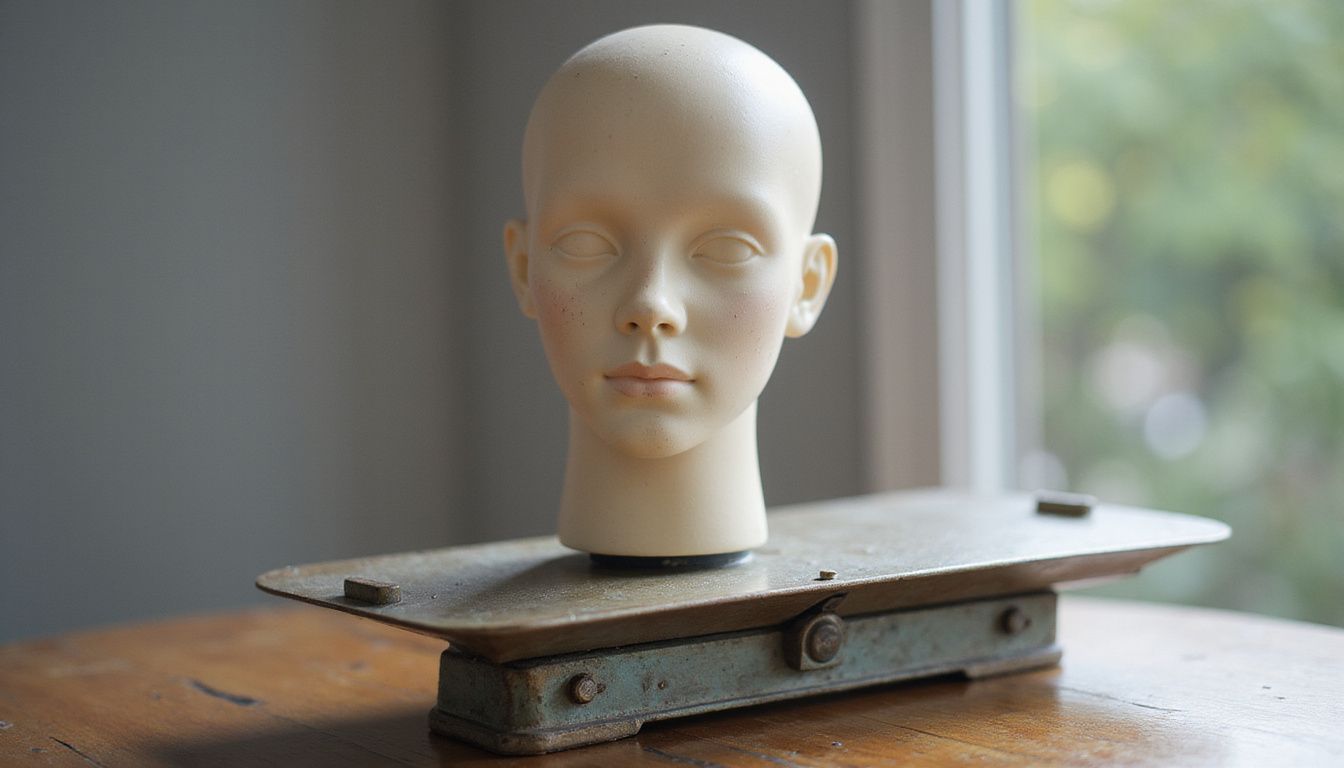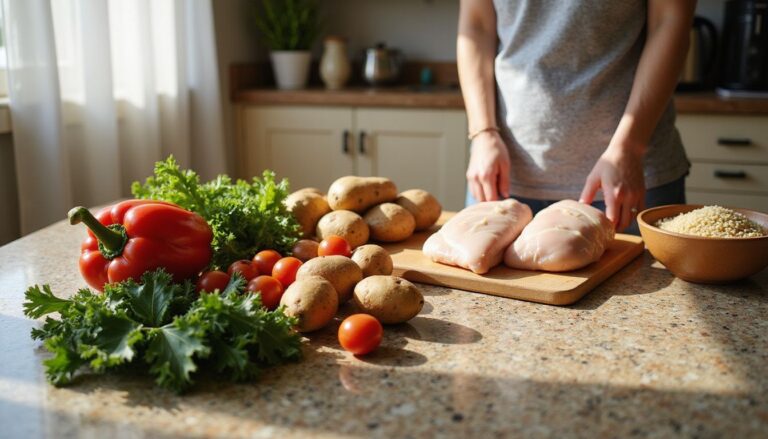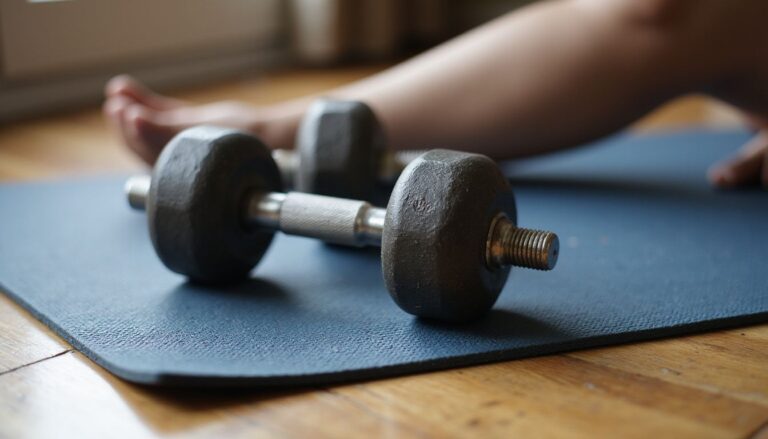Lose Face Fat: 8 Effective Tips For Facial Fat Reduction
Our Nutrition Assistant AI Suite will transform your body. You will lose fat, get toned, and build muscle. Gain confidence and optimal health.
If you want to lose face fat and feel stuck with puffiness or rounded cheeks, you are in good company. Facial fat changes with weight gain, water retention, age, and genetics. This guide explains what drives facial fat, clears up myths about spot reduction, and shares eight practical tips for a slimmer look, from daily habits to options like buccal fat removal.
Use these tools to help your face look slimmer, and to feel more in control of your routine.
Key Takeaways
- Spot reduction is a myth. Studies, including one from 2011, show you need full-body fat loss to change facial fat.
- Cardio like brisk walking or dance, paired with a balanced diet, can slim the face within two months. Aim for 150 minutes each week (CDC).
- Drinking more water, including before meals and instead of sugary drinks, produced an average 5.15 percent weight loss in 12 weeks in a 2019 review.
- Non-invasive options like radiofrequency and CoolSculpting® can reduce up to 25 percent of fat in the treated area per session, with little downtime (Lasers in Surgery and Medicine, 2014).
- Surgery, such as buccal fat removal and targeted liposuction, can be long lasting. Risks include infection, asymmetry, and nerve injury.

Understanding Facial Fat

Facial fat shapes the way your features sit, which changes how slim or full you appear. Knowing what adds to facial fat helps you choose stronger ways to reduce it.
What is facial fat?
Fat in your face acts like a cushion. It stores energy and helps you absorb vitamins A, D, and E. One key area is the buccal fat pad. It sits between your cheekbone and your jaw and supports the lower face.
Genes, age, and total body weight influence where and how much fat settles. Enough fat can make skin look smooth and youthful. Too little can look hollow. Extra volume can add roundness that some people enjoy and others want to trim.
After a fast weight drop years ago, my cheeks looked sunken. Keeping a steady, healthy weight later gave me a softer but more defined look.
Your facial fat can make you look energized, or tired, before you say a word.
What causes facial fat to accumulate?
Eating more calories than you burn leads to weight gain, which raises fat storage, including in the face. Low activity makes that effect stronger. Highly processed carbs like cookies, white bread, and pasta spike blood sugar. That drives insulin up, which signals your body to store more fat.
Alcohol adds many extra calories. It can also lead to dehydration, which may cause puffiness. Heavy drinking is linked with swelling around the cheeks and jaw. Paired with poor food choices, it can increase total body fat and facial fullness.
What factors influence where facial fat is stored?
Genetics play a big role, especially in the buccal fat pads. Some people have round cheeks at a healthy weight because of family traits. Age matters too. Children and teens often carry more cheek fat than adults.
Total body weight changes how your face looks. Gaining weight can add to facial fat, while losing body fat can slim the cheeks and jawline. Hormones also guide where your body stores fat, which explains why two people can lose weight but see different facial changes.
With that in mind, it helps to know how fat loss really works across your body.
Can You Target Fat Loss in Your Face?
Many people try cheek workouts or jawline tools to shrink a round face. Science shows that diet and regular exercise drive fat loss, not isolated facial moves.
Does spot reduction really work for the face?
Spot reduction does not work in the face, or anywhere else. Studies show no proof that you can pick a single area to reduce fat. Facial exercise gadgets and quick-fix plans are often promoted without strong evidence.
One trial in 2011 in the Journal of Strength and Conditioning Research found local muscle training did not reduce nearby subcutaneous fat. Your genes, age, hormones, and body composition decide where fat is lost first.
Fat loss happens bodywide when you burn more calories than you eat.
Setting realistic goals helps you stay patient while your face trims down with full-body changes.
How does overall weight loss affect facial fat?
Targeted face routines do not melt cheek fat on their own. You see facial changes as you reduce total body fat. A sound eating plan and consistent workouts help your body use stored fat for energy, which can slim facial areas too.
Steady changes like calorie awareness, aerobic activity, and less processed food help lower body fat percentage. As that drops, cheeks often look less full and the jawline stands out more. I tracked calories, ate balanced meals, and walked briskly daily. Within eight weeks my face looked slimmer.
Better sleep, more water, fewer alcoholic drinks, and more fiber support that progress. Results vary because of genetics and age. Still, most people see some difference in the mirror as weight comes down across the body.
Top 8 Tips for Reducing Facial Fat
Daily habits can reduce facial puffiness and help you lose face fat. The tips below are practical and supported by research.
How do facial exercises help reduce face fat?
Facial exercises build muscle tone, which can make features look tighter. Moves like cheek puffs, side-to-side lip puckers, or holding a wide smile work muscles under the skin. A 2021 review suggests these routines may support facial rejuvenation and a more defined look over time.
Try this mini set each day: move air from one cheek to the other for 30 seconds, then smile widely for 10 seconds and relax. Repeat 3 times. These moves increase blood flow and can improve skin firmness on the cheeks and jaw.
Why add cardio to your fitness routine?
Cardio is aerobic exercise that raises your heart rate. It burns calories and helps reduce body fat, which can slim the face. Running, brisk walking, swimming, cycling, and dancing are all strong choices.
In one 12-week study of 60 women, an aerobic program reduced waist size, body fat percentage, and total weight. Aim for 150 minutes of moderate activity each week plus two days of strength training (CDC). When I took two dance classes per week and walked on other days, my face changed faster than with diet alone.
How much water should you drink to reduce facial fat?
Hydration supports appetite control and reduces bloating. That can lower facial puffiness from salt or dehydration. A 2019 review reported that three water strategies, drinking more water daily, swapping sugary drinks for water, and drinking water before meals, led to an average 5.15 percent weight loss in 12 weeks.
Start with eight cups per day, about 64 ounces, then adjust for your size, activity, and climate. Choose water over soda or juice to reduce extra calories and support fat loss across the body.
Does cutting back on alcohol reduce face fat?
Reducing alcohol can help you lose facial fat. Alcoholic drinks provide calories with little nutrition, which raises weight and fat storage. Alcohol also acts like a diuretic, which can leave you dehydrated and puffy.
Moderate drinking is up to one drink per day for women or two for men, per CDC guidance. Cutting back often reduces cheek swelling within weeks. If you enjoy drinks socially, plan water between drinks and set a limit before you go out.
How do refined carbs affect facial fat?
Refined carbs like cookies, pastries, and white pasta digest quickly and spike blood sugar. Insulin rises, which tells your body to store fat. In a 2021 report, people who ate more whole grains gained less body fat and had smaller waists over four years.
Pick whole grains such as brown rice, oats, and quinoa. They digest slowly, keep you full longer, and make calorie control easier. After I swapped white bread for whole grain toast, my cheeks looked a bit slimmer within two months.
Why is getting enough sleep important for facial fat loss?
Sleep loss disrupts hormones that manage hunger and fullness. Cortisol, leptin, and ghrelin can shift, which increases appetite and cravings. That often leads to extra calories and weight gain.
Adults need at least seven hours of quality sleep each night, says the CDC. Better sleep lowers stress and supports fat loss, which can show first in the face. I noticed more puffiness after late nights. Adding a set bedtime quickly improved how my face looked in the morning.
How does sodium intake impact facial puffiness?
High salt intake pulls water into your tissues. The extra fluid can cause a puffy face. Most sodium in modern diets comes from processed foods and restaurant meals.
Choose whole foods more often. Swap chips and instant noodles for fruit, vegetables, and whole grains. Many people see less facial swelling within days after cutting salty foods and sauces. Taste foods before salting, and use herbs or citrus to boost flavor.
What role does fiber play in reducing facial fat?
Dietary fiber helps you feel full and can reduce calorie intake without strict tracking. Soluble fiber, found in oats, beans, and fruit, slows digestion and steadies blood sugar. A 2020 review of 62 studies linked more soluble fiber with lower body weight and smaller waistlines.
Target 28 to 34 grams per day for adults. Add fiber slowly, and drink more water to avoid stomach discomfort. A higher fiber plate supports weight management and may help your face look slimmer over time.
Effective Facial Exercises to Tone Your Face
Facial exercises can train key muscles, which may enhance definition. Think of them as light strength training for your face.
How do cheek puff exercises work?
Cheek puffs move air from side to side while holding air in your cheeks. This engages muscles around the mouth, nose, and jaw. A 2021 review suggests these moves can improve tone and support a more sculpted look.
I practiced cheek puffs daily for two weeks. My cheeks felt firmer near the corners of my mouth. Consistency matters, so pair these with smart eating and cardio.
What are the benefits of smiling exercises?
Holding a smile while gently clenching your teeth for several seconds can strengthen cheek muscles. Daily repetitions can reduce sagging and sharpen contours. In a study in JAMA Dermatology in 2018, consistent facial exercises improved muscle thickness in middle-aged adults.
As a bonus, increased blood flow from smiling can brighten your skin. Add 2 sets of 10 slow holds to your routine, with relaxed breathing between each set.
How can you tone your jawline with specific movements?
Focused moves can engage the lower face. Try side-to-side lip puckers for 10 seconds each side. Then suck in your cheeks and hold for 10 seconds. Repeat 3 times.
After three weeks of steady practice, I felt better definition near my chin. While research on fat loss from these moves is mixed, many people report firmer lines when exercises are paired with diet and regular activity.
Lifestyle Changes to Maintain Facial Fat Loss
Good habits lock in your progress. They also protect the results of any procedure you might choose later.
How does a balanced diet support facial fat reduction?
A balanced diet helps you create a calorie deficit, which is needed for fat loss. Focus on whole grains, lean protein, fruits, vegetables, and healthy fats like olive oil. This pattern reduces refined carbs and extra sodium, which can lower water retention and puffiness.
High fiber meals keep you full and support steady weight loss. That can make your face look slimmer and your energy steadier.
What are the best ways to manage stress for better results?
Stress can drive cravings and overeating. Add short practices like yoga, brisk walks outdoors, or meditation. Even 20 minutes in nature can reduce cortisol and lift mood.
Try a 2-minute breathing break before meals. It slows impulses and helps you choose better foods. A weekly yoga class lowered my evening snack urges and made calorie control easier.
Why is staying active important for facial fat control?
Movement raises daily calorie burn and helps prevent fat regain. The CDC suggests 150 minutes of moderate cardio each week, plus resistance training on two days.
Pick activities you enjoy, like brisk walking, swimming, or cycling. Consistent activity supports a slimmer face and pairs well with better sleep and lower sodium.
Non-Invasive Methods for Facial Fat Reduction
Non-invasive treatments give you options without surgery or stitches. Many people like them for quick visits and minimal downtime.
What is radiofrequency therapy and how does it work?
Radiofrequency uses controlled heat to target fat cells and tighten skin. A device delivers radio waves into deeper layers, which warms tissue gently. This can help your body clear fat while boosting collagen, the protein that keeps skin firm.
Many choose this to treat stubborn areas that resist diet and exercise. Some providers report visible changes after a few sessions. Ask a licensed professional about safety, expected results, and cost in your area.
How does CoolSculpting® reduce facial fat?
CoolSculpting® uses cryolipolysis, a cooling process that freezes fat cells. Fat cells are more sensitive to cold than other tissues. They crystallize and die, then your body clears them over several weeks.
There are no incisions or needles. Studies report up to a 25 percent reduction in the treated layer per session, though results vary (Lasers in Surgery and Medicine, 2014). I tried one session for cheek fullness. About eight weeks later my face looked slimmer, and I did not miss work.
This is a tool, not a shortcut. Healthy eating and regular exercise remain the base.
What are the benefits of Gua Sha for facial contouring?
Gua Sha uses a smooth stone or metal tool to massage the face. The gentle strokes support lymphatic drainage, which moves excess fluid. Many users see less puffiness and a more defined cheek area after several weeks of steady practice.
Gua Sha can boost local blood flow and add a healthy glow. It pairs well with the eight tips in this guide, since it targets fluid while your habits address fat and weight.
Surgical Options to Remove Facial Fat
Surgical treatment can reshape certain areas precisely. These procedures have risks, so you need a board-certified surgeon and clear expectations.
What happens during buccal fat removal surgery?
Buccal fat removal trims the fat pad inside your lower cheek to create a slimmer contour. You receive local anesthesia, sometimes IV or general anesthesia. The procedure often takes less than an hour.
The surgeon makes a small incision inside each cheek, removes the targeted fat, then closes with dissolvable stitches. You typically go home the same day. In 2022, 4,543 of these procedures were recorded in the United States (ASPS).
Risks include infection, bleeding, nerve injury with numbness or weakness, removing too much fat, and asymmetry. Recovery usually involves mouth rinses and a liquid diet for several days. Swelling often improves within one to two weeks. I supported patients in a Chicago clinic, and most returned to routine in about 10 days with careful aftercare.
How does liposuction target facial fat precisely?
Facial liposuction removes fat through tiny incisions using a thin tube called a cannula. The surgeon maps your face first, then focuses on areas like the cheeks or under the chin. Local anesthesia is common.
This method sculpts specific spots, which gives fast contour changes. A relative of mine had cheek liposuction after diet and facial exercises stalled. Within weeks she saw a clear change in shape. Talk with a qualified surgeon about candidacy, cost, and recovery.
Common Myths About Facial Fat Reduction
Misinformation can waste time and money. Clear facts help you set goals you can reach.
Why is spot reduction a myth?
Spot reduction suggests you can burn fat in one chosen area, like cheeks or chin, through special exercises. Studies from 2013 and 2017 debunked this for the belly and arms. The same rule applies to your face.
Facial exercises can strengthen muscles, which improves tone. They do not remove cheek fat by themselves. You need full-body fat loss from food choices and activity to see face changes.
What are the most common misconceptions about losing face fat?
Common myths include claims that a single face routine or a special diet melts cheek fat fast. Products that target face fat rarely have strong evidence. Supplements and gadgets can be expensive and disappointing.
Another myth is that one food group switch, like cutting refined carbs once, will fix cheek fullness overnight. Swapping to whole grains and reducing salt can help, but real change takes steady habits. I tried several trendy programs from emails promising a sharp jawline in days. Nothing worked until I improved my diet and added regular cardio.
How to Choose the Best Facial Fat Reduction Method
Your best plan blends habits you can keep with options that match your budget, timeline, and health status.
Can combining different methods improve results?
Yes. Pair nutrition upgrades with activity and simple facial exercises. Reduce refined carbs and sodium. Add whole grains, lean protein, and fiber. Drink more water. These steps enhance any non-invasive treatment and may reduce the number of sessions you need.
In my case, limiting alcohol and adding jawline moves sped up visible changes, compared with exercise alone. Combining methods tackles fat, fluid, and skin tone at the same time.
When should you seek professional advice?
See a healthcare professional if you have sudden facial swelling, new asymmetry, or changes that do not improve with lifestyle steps. A board-certified plastic surgeon can discuss fat transfer, buccal fat removal, or liposuction when non-surgical methods are not enough.
Persistent puffiness may also point to a medical issue or medication side effect. Personalized guidance helps you avoid risks and pick safe, effective care. This article is educational and not medical advice.
Frequently Asked Questions About Facial Fat Loss
You may still have questions as you plan your next steps. These quick answers can help.
Do facial exercises really reduce facial fat?
Evidence shows facial exercises can tone muscles and lift features. A 2021 review suggests they can improve firmness with steady practice. Proof that they reduce fat volume is limited. Use them as a complement to smart eating and regular cardio.
Moves like cheek puffs and smiling holds are safe for most people. Stop if you feel pain, and speak with a clinician if you have jaw issues or TMJ.
How long does it take to see changes in face fat?
Many people see early changes in several weeks. In a 2019 review, increased water intake led to an average 5.15 percent weight loss over 12 weeks, which can show in the face. Your timeline depends on food choices, activity, sleep, stress, and genetics.
Lowering sodium often reduces puffiness within days. After I cut salty snacks and switched to water at meals, my cheeks felt less bloated in one week.
Conclusion
Reducing facial fat takes time, but small steps add up. Drink more water, sleep seven hours, and choose whole grains over refined carbs. Keep alcohol low and reduce salty foods to curb puffiness.
Cardio and strength training support full-body fat loss, which helps the face look slimmer. Facial exercises add tone to the cheeks and jaw. Non-invasive treatments or surgery can help select concerns after you talk with a qualified professional. With steady habits, your face can look slimmer and more defined, and you can feel more confident day to day.
FAQs
1. How does reducing sodium intake help with facial fat reduction?
Reducing your sodium intake helps prevent water retention, which can make the face appear less puffy. Studies show that high salt diets often lead to bloating and swelling in the face.
2. Is it possible to lose weight only from the face?
Spot reduction is not supported by scientific evidence; losing overall body weight through healthy eating and exercise will also reduce facial fat over time.
3. What are some effective ways to help reduce your sodium intake for a slimmer face?
Choose fresh fruits and vegetables, read nutrition labels for hidden salt content, cook meals at home using herbs instead of salt, and avoid processed foods that contain high levels of sodium.
4. Can personal experience support these tips for losing facial fat?
Many people notice their faces look slimmer after they help reduce their sodium intake or adopt healthier habits like regular exercise and balanced meals. This practical approach aligns with research showing lifestyle changes impact both general health and appearance.
Summary: Lowering your daily salt use supports less puffiness in the face while whole-body weight loss leads to gradual facial slimming. Making simple dietary adjustments such as choosing low-sodium foods can produce visible results backed by science and real-life experiences alike.







